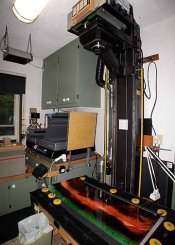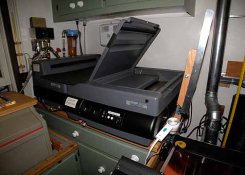stevewillard
Member
I am about to try printing a 30x40 color photograph using a drum processor that has no temperature control capability, and thus, I will be processing the print at room temperature using RA4 chemicals. I also have a smaller drum for processing smaller prints that I hope to use for my test prints. I will be making a 10L mix of Kodak Ektacolor RA-RT developer replenisher. I will be using the replenisher solution and NOT the starter solution to develop my prints. I will start with a water prewet step and add a stop bath step just after the developer step and before the bleach fix. I have a number of questions:
Thanks for any comments offered,
-Stephen
- Room temperature for my darkroom is around 60F. Is this a problem? Any recommended develop times? I was thinking about using two data points (68F, 2’30”) and (95F, 0’45”) to derive a straight line equation for predicting the processing times needed for a given room temperature. Is this approach plausible?
- I will be mixing the RA-RT developer and RA bleach fix with Kodak RA additives for each chemistry to reduce oxidation. Will this be a problem for process at room temperature?
- How sensitive is RA4 processing to variations in agitation? I have not figured out how to secure and 8x10 test print inside the 30x40 drum. My plain is to us a smaller drum for processing the 8x10 test prints and assume the difference in agitation between the two drums will NOT cause any visible differences in print density. Is this a reasonable assumption?
- Of course, if RA-RT chemistry is agitation sensitive, then does anyone have any ideas of how to secure an 8x10 test print inside my 30x40 drum so that I can more closely mimic the actual agitation that the final 30x40 print will receive?
- Eventually I hope to use Kodak test strips and a JOBO CPP2 to more accurately determine the development time needed for a given “room temperature”. The development time needed for a given temperature that produces an optimal test strip will be the development. I would repeat this process simulating a number of different room temperatures on my JOBO CPP2 processor. I would then plot the data and use curve fitting software to derive an equation to more accurately predict developer times for any given room temperature of the chemicals. Is this a realistic approach?
Thanks for any comments offered,
-Stephen












